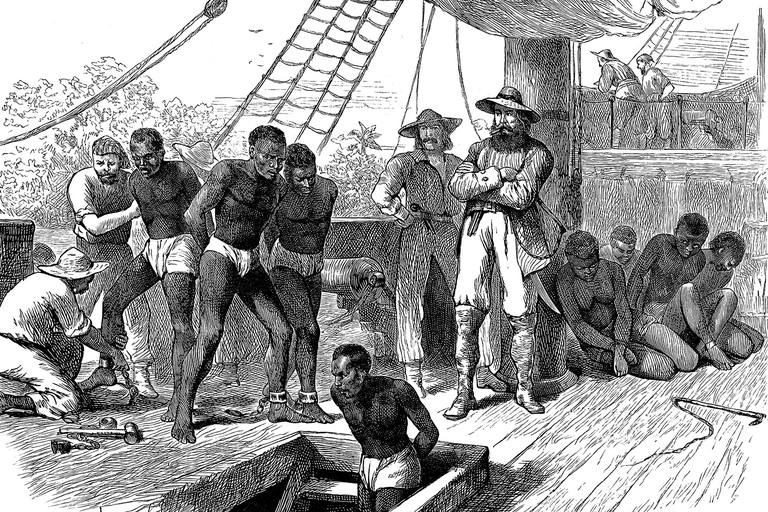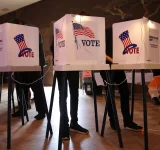Imagine waking up one day and not finding your father home. You go to school thinking he’s already left for work. You come home. You play around until late. Then you realize, he might never be home again.
Among people who have had the worst of luck, the African-American population probably sticks out. The murder of George Floyd was perhaps the buildup of hundreds of years of racial segregation and disenfranchisement. Bigotry is not a new concept, and perhaps this incident will help us shed light upon how big of a problem it is. In this part of a three-part article series, we will talk about the history of black lives. In the following articles, we will delve deeper into the modes, the causes and effects of discrimination on black men and women.
Who are African-Americans?
Obvious from its name, the African-Americans have two roots, African and American. They originate from Africa. Sailors and merchants would often kidnap Africans with hopes of making a buck in the slave-market. And the market had customers, notable of whom were Britain and America.
With the legalization of slavery on 1641, the pillaging of African villages and the kidnapping of Africans grew. The legalization act declared slaves to be under the ownership of their white masters, giving masters the right to treat them however they wanted. Slavery proved to be a beneficial trade because the southern states had lots of cotton plantations and the Confederates needed free labor. America had been the biggest exporter of cotton in the world.
The slaves lived in inhumane conditions. Seventeenth century conservative literature tells us about an established set of guidelines that the slavers followed that told them to treat slaves as sub-humans. Slaves were treated as livestock. They were whipped at will and raped. Women were forced into pregnancy only that they could see their child auctioned off. Slaves were rarely allowed to learn the language because as some novelists put it, “It would make them more intelligent than livestock and therefore a threat for the survival of the elites.”
The northern states were more dependent on industry than on agriculture. This means that they had fewer plantations and therefore fewer instances of slavery. There were free African-Americans in the streets. They were allowed to earn their own living, although their job-situations were not ideal. They were forced into jobs that were considered substandard at the time: janitor, maid or teacher (not a typo). Many slaves fled north only to get the taste of freedom. A handful got caught mid-way and were tortured to death in front of their slave-brethren.
The north, although did not actively support slavery, were dependent on the cotton plantations of the south. Corporations provided the plantations with heavy funding, which empowered the Confederates. The Confederates kept using slaves in their plantations to provide for the economy of the country. The working conditions were horrid. Slaves died of disease. Others were tortured or hanged from trees.
Thomas Jefferson faced heavy criticism for the Declaration of Independence. Himself being in possession of over 600 slaves, he wrote a Condemnation of Slavery to be included in the declaration as part of the conjecture “All men are created equal” in 1776. The condemnation was later scraped out of fear of losing support of the south. Jefferson further claimed that slavery was “A necessary evil”.
Massive problems submerged because African-Americans were almost 10% of the population. They were also marginalized. America was divided into either “slave-states” or “free-states”. Although the states were heavily balanced in terms of numbers, the slave-states feared that the north would set their slaves free. Out of fear of an attack from the north, Confederates bombed Fort Sumter in South Carolina on 1861, initiating the civil war.
The north put a union blockade which stopped cotton export, putting the south in financial loss. Although President Abraham Lincoln hated slavery, he was not willing to include a marginalized community in the military yet. However, Britain was already enraged because their cotton supply had been cut off, and Lincoln had lost most battles against the south. He faced outrage from people in his own party. He decided that it was time to make the war about something he cared for. He declared the Proclamation of Emancipation on 1863 that declared an end to slavery. Sothern slaves realized that the only means for them to be free now was that the north won the war. Out of support for their southern brothers, more and more African-Americans joined the war. The war had just got personal.
During January 1865, the Confederate capital Richmond fell, which marked the beginning of the end of the civil war. President Lincoln was re-elected to be President by a landslide over Confederate empathizer General McLellan. The 13th amendment was passed that finally saw African-Americans as equals. After over 200 years of torture, African-Americans were finally acknowledged as citizens. They could vote without fear of being murdered by white supremacists. They could work and earn a livelihood. And they could own property.
Although we have come a long way from the tyrannies of the war against the Confederates, discrimination still remains, now in more modern forms. Life is far from peaceful at the moment. The next part will deal with the nature of discrimination.






















